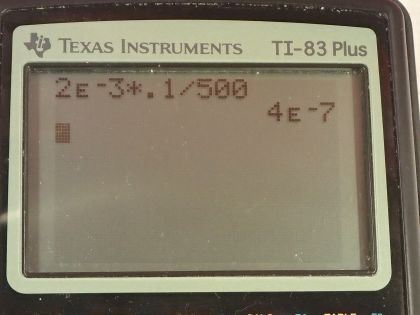Question
Camera flashes charge a capacitor to high voltage by switching the current through an inductor on and off rapidly. In what time must the 0.100 A current through a 2.00 mH inductor be switched on or off to induce a 500 V emf?
Final Answer
Solution video
OpenStax College Physics for AP® Courses, Chapter 23, Problem 60 (Problems & Exercises)

vote with a rating of
votes with an average rating of
.
Calculator Screenshots
Video Transcript
This is College Physics Answers with Shaun Dychko. The circuit in the flash of a camera charges up a capacitor to 500 volts using only maybe a 1.50 volt battery inside and it does this by using an inductor of 2.00 millihenries, which is 2.00 times 10 to the minus 3 henries and it switches the current through this inductor on and off really quickly and the inductor will have an induced emf in it as a result of this changing current through it. So the induced emf will be this self-inductance multiplied by how quickly the current changes. So we have 0.100 amps is the change in current divided by some amount of time that we have to calculate so how quickly does this current need to change in order to induce this emf based on the self-inductance given? So we'll solve for Δt by multiplying by Δt over emf and then that gives us the change in time then is the self-inductance times the change in current divided by the induced emf. So that's 2.00 times 10 to the minus 3 henries times 0.100 amps divided by 500 volts and that's 4.00 times 10 to the minus 7 seconds so the current has to change really quickly and it's a bit interesting how such a high voltage can be created using such a small voltage source of a battery of about 1.50 volts. This time is 0.400 microseconds, which sounds like a very short period of time and of course it is but if you turn it into a frequency, it's 2.5 megahertz and computer circuits run at gigahertz speeds which is three orders of magnitude greater than this so this time—even though it seems short— it's not hard to do.
